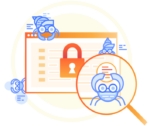
Innovation is essential for software engineering leaders to circumvent competition and create an attractive technology landscape for users and developers. Innovation keeps processes, tools and outcomes fresh and productive.
However, software engineering teams often experience burnout due to the demand for innovation and have little energy to innovate their own processes and practices. Software engineering leaders can introduce innovation with new ways of working.
Use AutoML to Reduce External Dependencies and Increase Innovation
Data science skills are not abundant within software engineering teams. Software engineering leaders are pressed to implement innovative machine learning (ML) algorithms into their applications for intelligent and predictive purposes. AutoML services allow developers without significant data science skills to build purpose-specific ML. Gartner predicts that by 2027, up to 75% of enterprise software engineering teams will use autoML techniques.
AutoML simplifies the current challenges of software engineering leaders and their teams from the creation of models to model life cycle management. As software engineering leaders solve their data science talent constraint by using autoML services, they must also ensure applications are using artificial intelligence (AI) responsibly. Responsible AI accounts for concepts such as bias mitigation, explainability and transparency.
Software engineering leaders must budget time and resources to train their developers in areas of model life cycle management, such as model validation, deployment, operations and monitoring. Establish a community to educate on responsible AI and governance, and to monitor deployed models for ethical behavior.
Pilot ML-Powered Coding Assistants
Code generation products based on foundation models, such as large language models, are able to generate complex and longer suggestions, resulting in a significant increase in developer productivity.
Code completion tools have become essential for developers to handle code complexity, especially in modern integrated development environments. By 2027, 50% of developers will use ML-powered coding tools, up from less than 5% today.
It is important to note that rule-based engines are not able to keep pace with the rapid growth of enterprise code and open-source code dependencies. New challenges around productivity, quality of the generated code, intellectual property attribution and bias in generated snippets are emerging. Software engineering leaders should define a strategy for these powerful tools and develop a plan to mitigate challenges as they arise. Foster a community of practice to master the new skill of crafting prompts using a combination of natural language and coding practices to figure out how to optimize code generation with minimal effort.
Evaluate How AI-Generated Design Improves User Outcomes
Generative design uses AI, ML and natural language processing (NLP) technologies to automatically generate user flows, screen designs and content for digital products. AI-generated design gives designers the opportunity to focus on solving problems for users, while AI tools produce intuitive, accessible software designs. This approach also allows software engineering leaders to move quickly and deliver innovative features.
Generative design AI reduces the human effort needed for design exploration and final product design, allowing team members to focus on user research, product strategy and solution evaluation. By 2027, generative design will automate 70% of the design effort for new web and mobile apps.
As early-stage products powered by generative design AI are growing, software engineering leaders should be building products that are ready to leverage this design sooner rather than later. Products based on popular design systems, such as platform-based and open-source design systems, will be able to use generative design AI sooner than custom product designs.
Create a Vision for Digital Immunity Across the Software Delivery Life Cycle
Software engineering leaders struggle to plan for all eventualities of how modern, highly distributed software systems may fail, resulting in an inability to quickly remediate software defects and avoid impact on users. A digital immune system combines practices and technologies from observability, AI-augmented testing, chaos engineering, autoremediation, site reliability engineering and software supply chain security to increase the resilience of products, services and systems.
By 2027, organizations who invest in building digital immunity will increase customer satisfaction by decreasing downtime by 80%. Prioritizing digital immunity activities will not only prepare organizations to mitigate potential risks, but also use failures as learning opportunities.
Software engineering leaders need to provide clear guidance to teams defining how to prioritize digital immunity efforts and investments as part of value stream delivery. Accelerate response to critical business needs by improving developer experience and modernizing inefficient development, testing and security practices.
These ways of working will help organizations improve the productivity and experience of users and engineers alike. Remember, innovation is a key part of keeping processes productive. Use these ways of working to improve the software life cycle from design, coding and testing, to the actual product-led experiences themselves.






